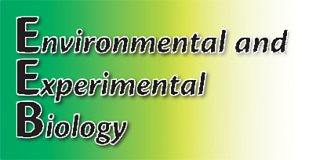
On-line: ISSN 2255–9582

| Faculty of Biology, University of Latvia | ||||||

|
Hard copy: ISSN 1691–8088
On-line: ISSN 2255–9582 Acta Univ Latv (2006) 710: 81–91
|
|||||

|
About the Journal | Retractions | Open Access | Author Guidlines | Current Issue | Archive |
|
Environmental and Experimental Biology |
Acta Univ Latv (2006) 710: 81–91 |
The strategy of minimum interference was used in the present study to establish in vitro cultures of 29 rare and endangered plant species from the coastal zone of Baltic sea in the territory of Latvia by using preferentially seeds as initial plant material. In respect to germination behaviour all species fell into three groups. Seeds of eight species showed uniform germination without any visible signs of dormancy. For 13 species sporadic germination was observed. The remaining species were designated as in an undefined or incompletely understood state. Species-specific morphogenic responses were found during development of plants on hormone-free agarized medium. Annual plants flowered, gave seeds and completed the life cycle within 6 months of tissue culture. Clonal species exhibited pronounced clonal development according to a particular growth form. Axillary bud formation was not stimulated on a hormone-free medium. Root formation was a characteristic for the majority of species. Initiation of tissue culture with shoot explants was performed for seven species. The obtained results form the basis for development of suitable methods for conservation of rare and endangered plant species in tissue culture.